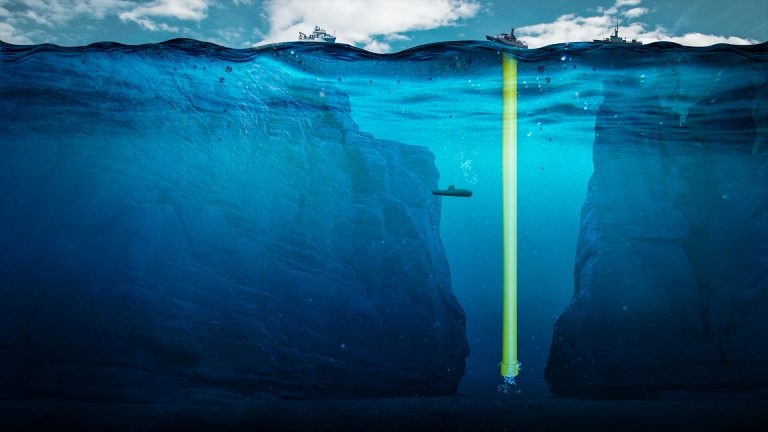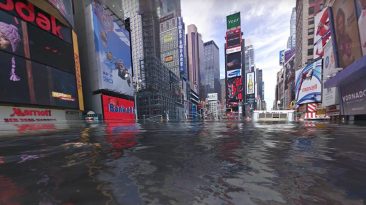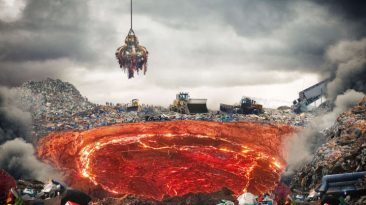This is the longest underwater pipe on Earth. It stretches to the bottom of the deepest place on the planet, where only a few people have ever visited. And we’re about to take you on an epic journey to construct it.
What materials would be suitable for the task? What creatures would lurk around you? And at what point would constructing the pipe become unbearable?
There is a reason why only a few people have ever made it to the bottom of the Mariana Trench. Let me tell you, it’s not the most pleasant of trips.
The deepest point of the trench, called the Challenger Deep, hits the mark at 11 km (7 mi). No light makes it that deep, and the temperature is only a few degrees above freezing.
If you were to dive down this deep, with or without a protective suit, the pressure would crush you. It would feel as if you had one hundred elephants standing on your head.
Or, as if you piled five blue whales on your shoulders. That’s what I call being under pressure. So, how would we go about constructing a pipe in an environment where no human can survive?
0 meters underwater
Let’s start from the beginning. Building a pipe like this would require a lot of planning, preparation, and millions of dollars.
You’d be aiming for a pipe that could withstand pressure one thousand times greater than our normal atmospheric pressure. What materials would even stand a chance?
I could suggest steel since that’s what most water pipes are made of. It’s durable and cost-effective. But transporting 11 km (7 mi) of pipe into the ocean as one piece would be next to impossible.
You might be better off with polyester or vinyl resin pipe. You could reinforce it with fiberglass, and assemble it underwater. When you get to a depth that would crush the fiberglass, you could add some steel. Well, that’s the plan. Now, let’s see how it would play out.
200 meters underwater
As you descended 200 m (660 ft) underwater, you’d leave the Epipelagic Zone and find yourself in the Mesopelagic Zone. Those are the top two of five oceanic layers.
Your lungs would be getting compressed as you descended deeper and deeper. But it would still be doable at this point, as long as you were wearing a pressure suit. It would be dark. But you’d see twinkling lights once your eyes adjusted to the darkness. Those would be the bioluminescent animals that call the Mesopelagic Zone their home.
1,000 meters underwater
At 1,000 m (3,300 ft), you’d enter the Bathypelagic Zone of the ocean. And you’d better get into a submarine, because no pressure suit would be able to keep you from getting crushed now. From this point on, underwater robots would take over the construction and maintenance.
The pipe itself would need to be getting thicker so that it could bear the increasing water pressure. And you’d need a powerful flashlight. Because the only visible light down there is produced by creatures themselves.
4,000 meters underwater
You’d descend deeper, and hit the 4,000 m (13,000 ft) mark. At this point, you’d enter the Abyssopelagic Zone. Now you’d truly see what dark looks like. No light at all can make it down to the Abyssopelagic territory. And the water temperature is near freezing, so very few animals live here. You’d be lucky to see a few tiny squid.
6,000 meters underwater
You’d be in the home stretch now, in the waters of the Hadalpelagic Zone. In the deepest, the darkest, the most unexplored place on Earth. I wouldn’t recommend you descend all the way down.
At the bottom of the Mariana Trench, the pressure is about 1,100 atm. That’s the feeling of one hundred elephants standing on your head.
Building a pipe here would be challenging. You’d need to send some very durable robots to the bottom of the trench, because these depths can implode even the toughest of them.
On top of enduring extremely high pressure, they’d have to be able to withstand the temperatures just above freezing.
Nothing larger than 3 cm (1 inch) can live in this dark, cold, absolutely hostile environment. So get cozy and let the robots finish the pipe.
Sources
- “Life Under Pressure – 100 Elephants On Your Head – Schmidt Ocean Institute”. 2014. Schmidt Ocean Institute.
- “How It Works: Building A Kilometer-Long Pipe Deep Under The Sea”. Rebecca Boyle, 2012. Popular Science.
- “Drilling The Macondo Prospect “. 2020. planetforlife.com.
- “Deepwater Pipelines Taking The Challenge To New Depths”. 2009. Offshore.
- “How Deep Can A Human Dive? Deep Diving Explained | The Coastal Side”. 2019. The Coastal Side.
- “Layers of the Ocean – Deep Sea Creatures On Sea And Sky”. 2020. seasky.org.
- “Pipelines for Development at Deep Water Fields” 2020. core.ac.uk.
- “How Tiny Crustaceans Survive The Crushing Pressures Of The Mariana Trench”. Choi, Charles. 2019. livescience.com.


















